Regulation of International Financial Markets and International Banking
The research group ‘Regulation of International Financial Markets and International Banking’ analyses international capital flows as well as the consequences of regulatory changes for financial stability and intermediation. Both aspects can facilitate an efficient allocation of capital and enable risk sharing, but spark at the same time global financial instabilities. Banking regulation and supervision has accordingly changed significantly over recent years, but the impact of these comprehensive reforms on the functionality of the financial system remain unclear. In addition banks face further challenges, such as tightening monetary policy, geopolitical risks, and the emergence of new competitors due to digitalization.
Against this backdrop, the research group contributes to the literature in three ways. First, the group empirically analyses international capital flow determinants and the implications for financial stability and credit allocation. Periods characterised by a high degree of financial integration are often followed by financial crises, causing negative spill-overs to the real economy. This work package seeks to advance our understanding of how to maintain a stable banking system that is able to efficiently channel financial resources to firms and households alike.
Second, the group analyses the impact of changes in banking supervision and regulation on (inter)national activities of banks with a specific focus on the European integration process. The establishment of the European Banking Union constantly shapes the banking sector as prudential and regulatory responsibilities are transferred from the national to the Euro area level. Integrated markets allow for an early detection of soaring risks at an early stage, but new regulations can also create distortions. This work package contributes to the scant empirical evidence on this trade-off.
Third, “traditional” banks are not only operating in a tighter regulatory framework, they also face plenty of challenges threatening their business model and longer-term profitability. For example, increasing interest rates sparked deposit withdrawals and valuation losses of banks’ fixed income investment. Distortions due to the realization of political risks and rising levels of public, private, and corporate debt might bear the risk of future non-performing loans. The emergence of non-bank financial intermediaries (FinTech) challenge current business models of banks. The consequences for banks or their new competitors should be monitored.
Workpackage 1: The Shape of International Financial Markets
Workpackage 2: Evaluation of Regulatory Policies in Integrated Markets
Workpackage 3: Financial Intermediation in a Changing World
IWH Data Project: International Banking Library
The International Banking Library is a web-based platform for the exchange of research on cross-border banking. It provides access to data sources, academic research, both theoretical and empirical, on cross-border banking, as well as information on regulatory initiatives. The International Banking Library addresses researchers, policymakers, and students of international banking and economics in search of comprehensive information on international banking issues.
The contents of the International Banking Library are summarised and distributed in a quarterly newsletter, thereby adding to the international visibility of the IWH (with more than 700 subscribers from academia, central banks and the industry) and facilitating a regular exchange of our research ideas with policy makers.
IWH Data Project: Financial Markets Directives Database
In Europe, financial markets have undergone significant regulatory changes since the last financial and sovereign debt crisis. One key element is the harmonisation of rules for capital regulation, bank resolution and deposit insurance. In the euro area, the sizable change in the regulatory framework is also reflected by the establishment of the European Banking Union.
Another change that might have implications for financial structure is the establishment of a Capital Market Union. Evidence-based policymaking and the evaluation of (un-)intended consequences of such reforms needs information on when regulatory changes happen. In the European Union, the cornerstones of regulatory changes that apply to all member states are implemented by means of regulations or directives. The latter ones have to be implemented, with some scope for discretion, into national law by the member states. The Financial Markets Directives Database assembles the dates at which countries have published the key legal document related to several recent directives affecting financial markets.
The cornerstone of the database constitutes information on the European Banking Union including its three directives on capital requirements, bank resolution and deposit insurance (CRD IV, BRRD, DGSD). The database has been made publically available via the website “International Banking Library” and is part of the Centre for Evidence-based Policy Advice (IWH-CEP).
Research Cluster
Economic Dynamics and StabilityYour contact

- Department Financial Markets
EXTERNAL FUNDING
07.2017 ‐ 12.2022
The Political Economy of the European Banking Union
Causes of national differences in the implementation of the Banking Union and the resulting impact on financial stability.
01.2015 ‐ 12.2017
Dynamic Interactions between Banks and the Real Economy
Refereed Publications
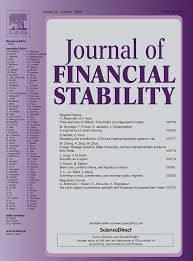
Cross-border Interbank Networks, Banking Risk and Contagion
in: Journal of Financial Stability, 2015
Abstract
Recent events have highlighted the role of cross-border linkages between banking systems in transmitting local developments across national borders. This paper analyzes whether international linkages in interbank markets affect the stability of interconnected banking systems and channel financial distress within a network consisting of banking systems of the main advanced countries for the period 1994–2012. Methodologically, I use a spatial modeling approach to test for spillovers in cross-border interbank markets. The results suggest that foreign exposures in banking play a significant role in channeling banking risk: I find that countries that are linked through foreign borrowing or lending positions to more stable banking systems abroad are significantly affected by positive spillover effects. From a policy point of view, this implies that in stable times, linkages in the banking system can be beneficial, while they have to be taken with caution in times of financial turmoil affecting the whole system.
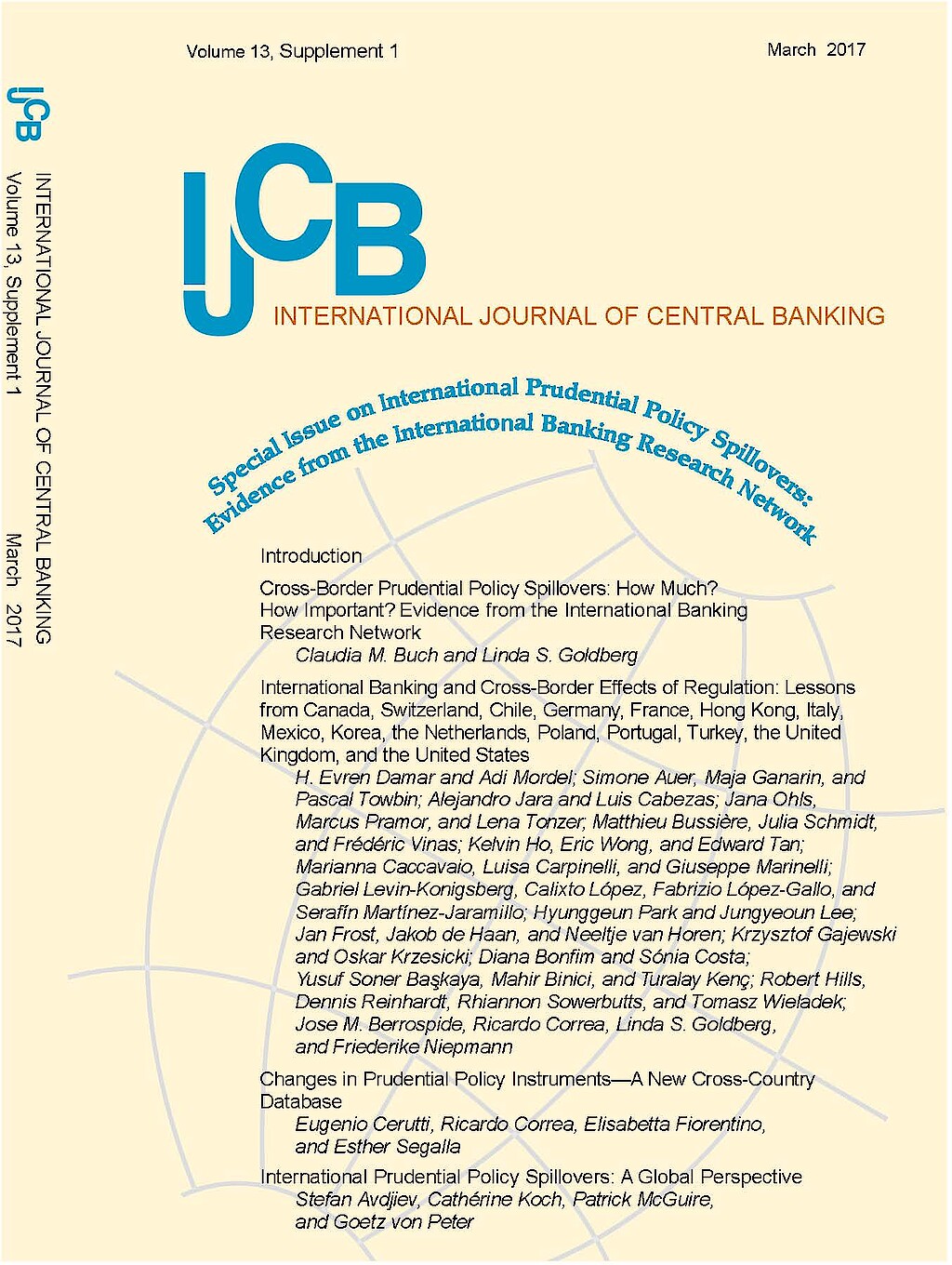
Financial Stability and Central Bank Governance
in: International Journal of Central Banking, No. 4, 2014
Abstract
The financial crisis has ignited a debate about the appropriate objectives and the governance structure of Central Banks. We use novel survey data to investigate the relation between these traits and banking system stability focusing in particular on their role in micro-prudential supervision. We find that the separation of powers between single and multiple bank supervisors cannot explain credit risk prior or during the financial crisis. Similarly, a large number of Central Bank governance traits do not correlate with system fragility. Only the objective of currency stability exhibits a significant relation with non-performing loan levels in the run-up to the crisis. This effect is amplified for those countries with most frequent exposure to IMF missions in the past. Our results suggest that the current policy discussion whether to centralize prudential supervision under the Central Bank and the ensuing institutional changes some countries are enacting may not produce the improvements authorities are aiming at. Whether other potential improvements in prudential supervision due to, for example, external disciplinary devices, such as IMF conditional lending schemes, are better suited to increase financial stability requires further research.
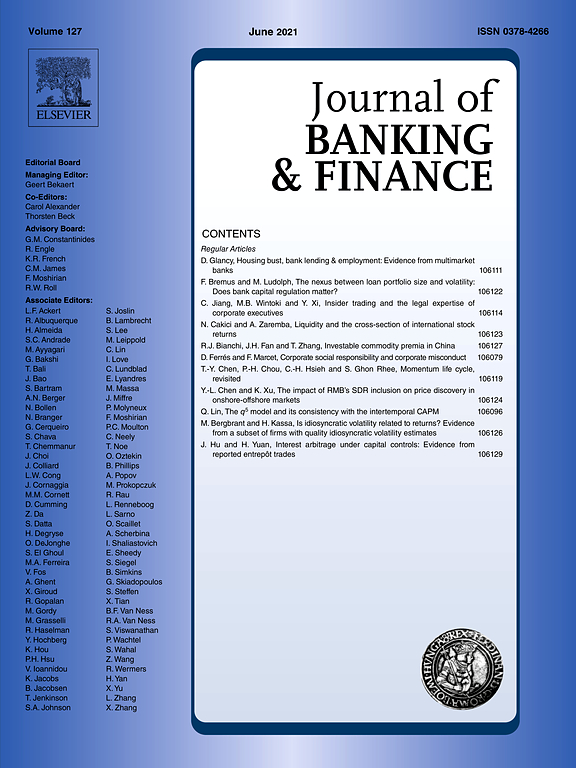
Should I Stay or Should I Go? Bank Productivity and Internationalization Decisions
in: Journal of Banking and Finance, No. 42, 2014
Abstract
Differences in firm-level productivity explain international activities of non-financial firms quite well. We test whether differences in bank productivity determine international activities of banks. Based on a dataset that allows tracking banks across countries and across different modes of foreign entry, we model the ordered probability of maintaining a commercial presence abroad and the volume of banks’ international assets empirically. Our research has three main findings. First, more productive banks are more likely to enter foreign markets in increasingly complex modes. Second, more productive banks also hold larger volumes of foreign assets. Third, higher risk aversion renders entry less likely, but it increases the volume of foreign activities conditional upon entry.
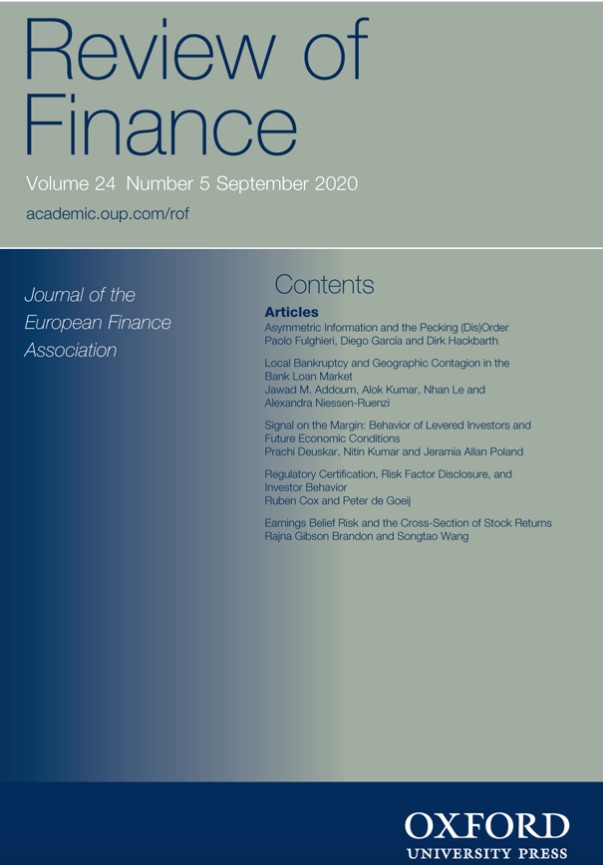
The Impact of Public Guarantees on Bank Risk-taking: Evidence from a Natural Experiment
in: Review of Finance, No. 2, 2014
Abstract
In 2001, government guarantees for savings banks in Germany were removed following a lawsuit. We use this natural experiment to examine the effect of government guarantees on bank risk-taking. The results suggest that banks whose government guarantee was removed reduced credit risk by cutting off the riskiest borrowers from credit. Using a difference-in-differences approach we show that none of these effects are present in a control group of German banks to whom the guarantee was not applicable. Furthermore, savings banks adjusted their liabilities away from risk-sensitive debt instruments after the removal of the guarantee, while we do not observe this for the control group. We also document that yield spreads of savings banks’ bonds increased significantly right after the announcement of the decision to remove guarantees, while the yield spread of a sample of bonds issued by the control group remained unchanged. The evidence implies that public guarantees may be associated with substantial moral hazard effects.

Do Banks Benefit from Internationalization? Revisiting the Market Power–Risk Nexus
in: Review of Finance, No. 4, 2013
Abstract
We analyze the impact of bank internationalization on domestic market power (Lerner index) and risk for German banks. Risk is measured by the official declaration of regulatory authorities that a bank is distressed. We distinguish the volume of foreign assets, the number of foreign countries, and different modes of foreign entry. Our analysis has three main results. First, higher market power is associated with lower risk. Second, holding assets in many countries reduce market power at home, but banks with a higher share of foreign assets exhibit higher market power. Third, bank internationalization is only weakly related to bank risk.
Working Papers
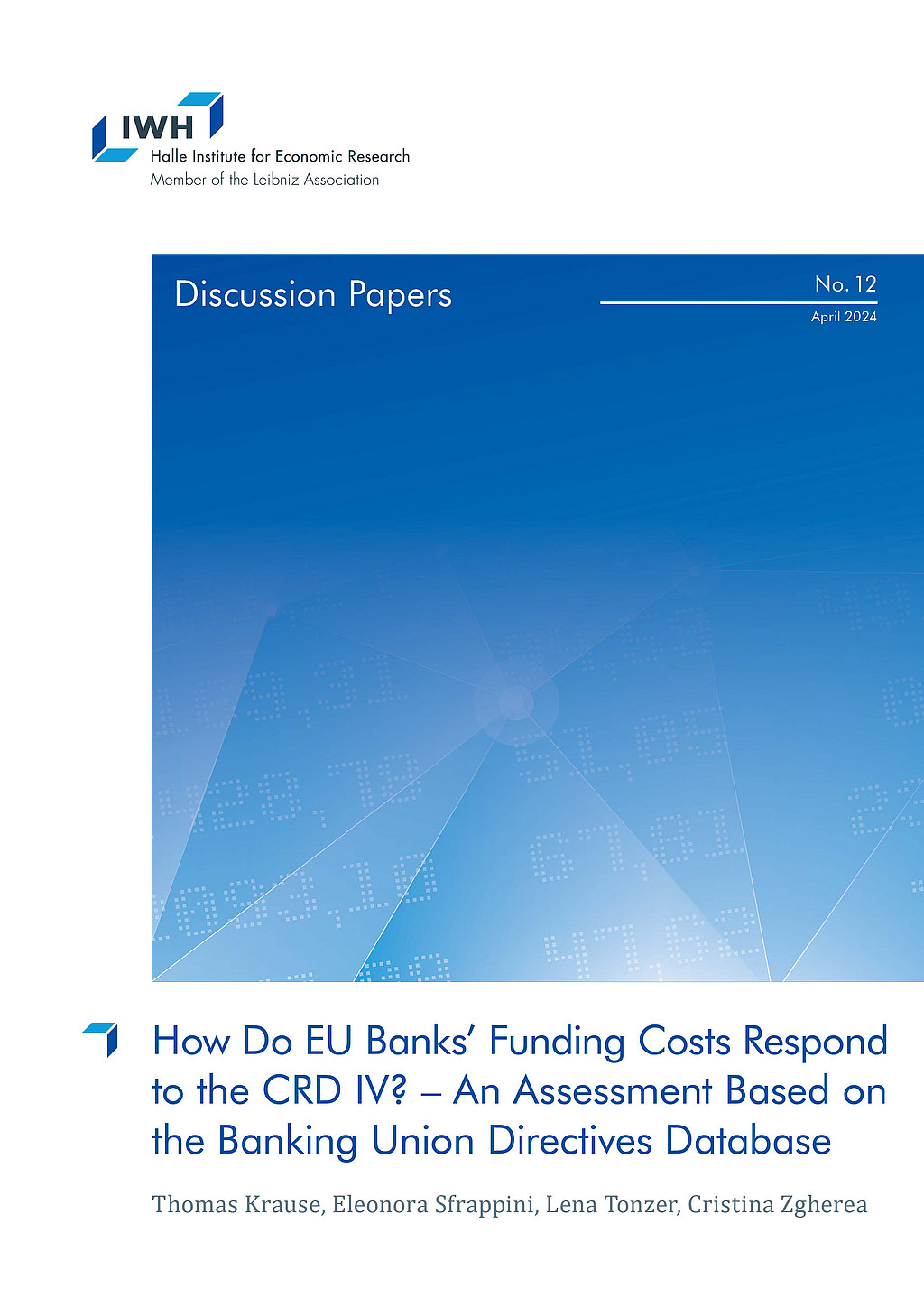
How Do EU Banks’ Funding Costs Respond to the CRD IV? An Assessment Based on the Banking Union Directives Database
in: IWH Discussion Papers, No. 12, 2024
Abstract
The establishment of the European Banking Union constitutes a major change in the regulatory framework of the banking system. Main parts are implemented via directives that show staggered transposition timing across EU member states. Based on the newly compiled Banking Union Directives Database, we assess how banks’ funding costs responded to the Capital Requirements Directive IV (CRD IV). Our findings show an upward trend in funding costs which is driven by an increase in cost of equity and partially offset by a decline in cost of debt. The diverging trends are most present in countries with an ex-ante lower regulatory capital stringency, which is in line with banks’ short-run adjustment needs but longer-run benefits from increased financial stability.
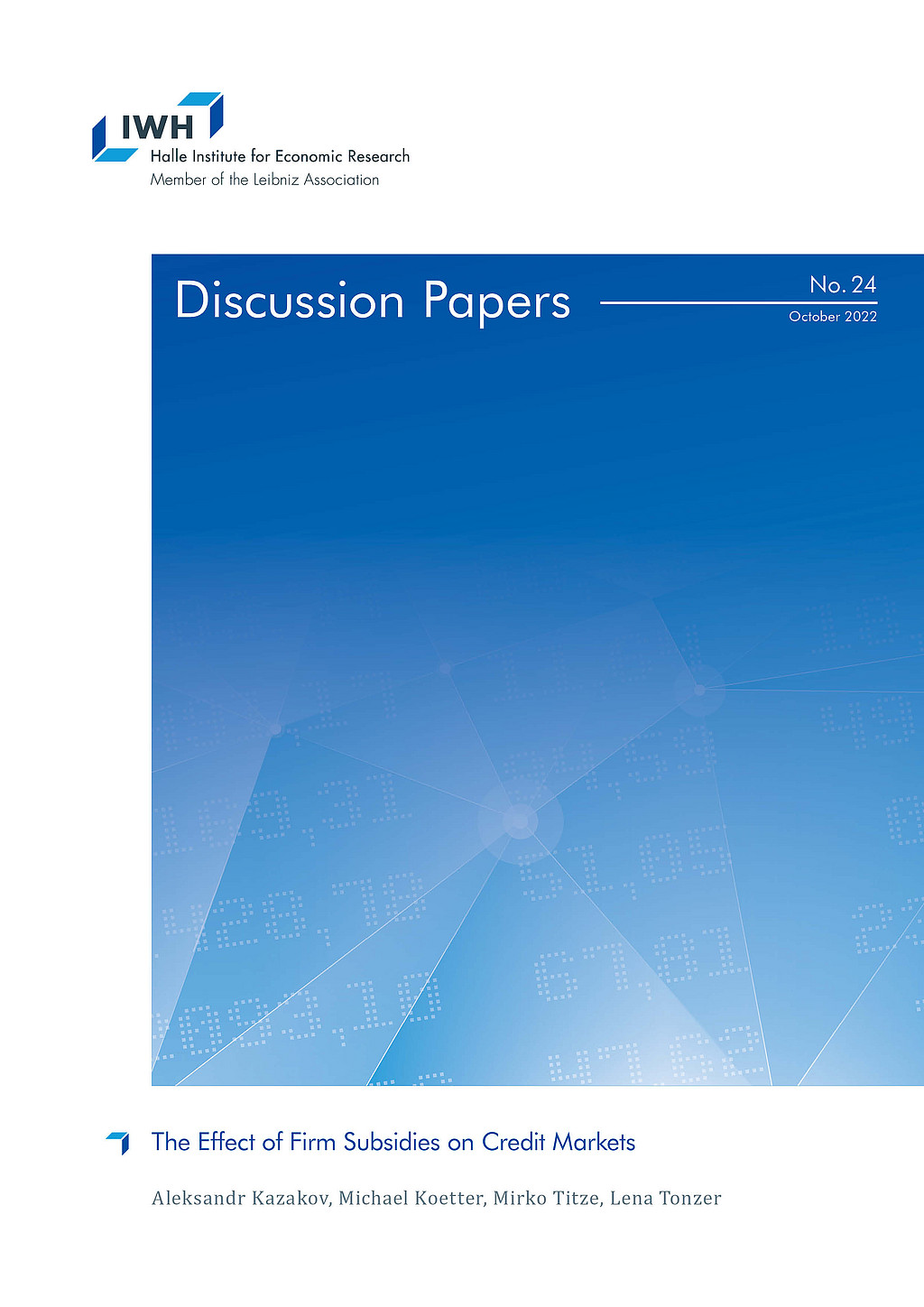
The Effect of Firm Subsidies on Credit Markets
in: IWH Discussion Papers, No. 24, 2022
Abstract
<p>We use granular project-level information for the largest regional economic development program in German history to study whether government subsidies to firms affect the quantity and quality of bank lending. We combine the universe of recipient firms under the Improvement of Regional Economic Structures program (GRW) with their local banks during 1998-2019. The modalities of GRW subsidies to firms are determined at the EU level. Therefore, we use it to identify bank outcomes. Banks with relationships to more subsidized firms exhibit higher lending volumes without any significant differences in bank stability. Subsidized firms, in turn, borrow more indicating that banks facilitate regional economic development policies.</p>
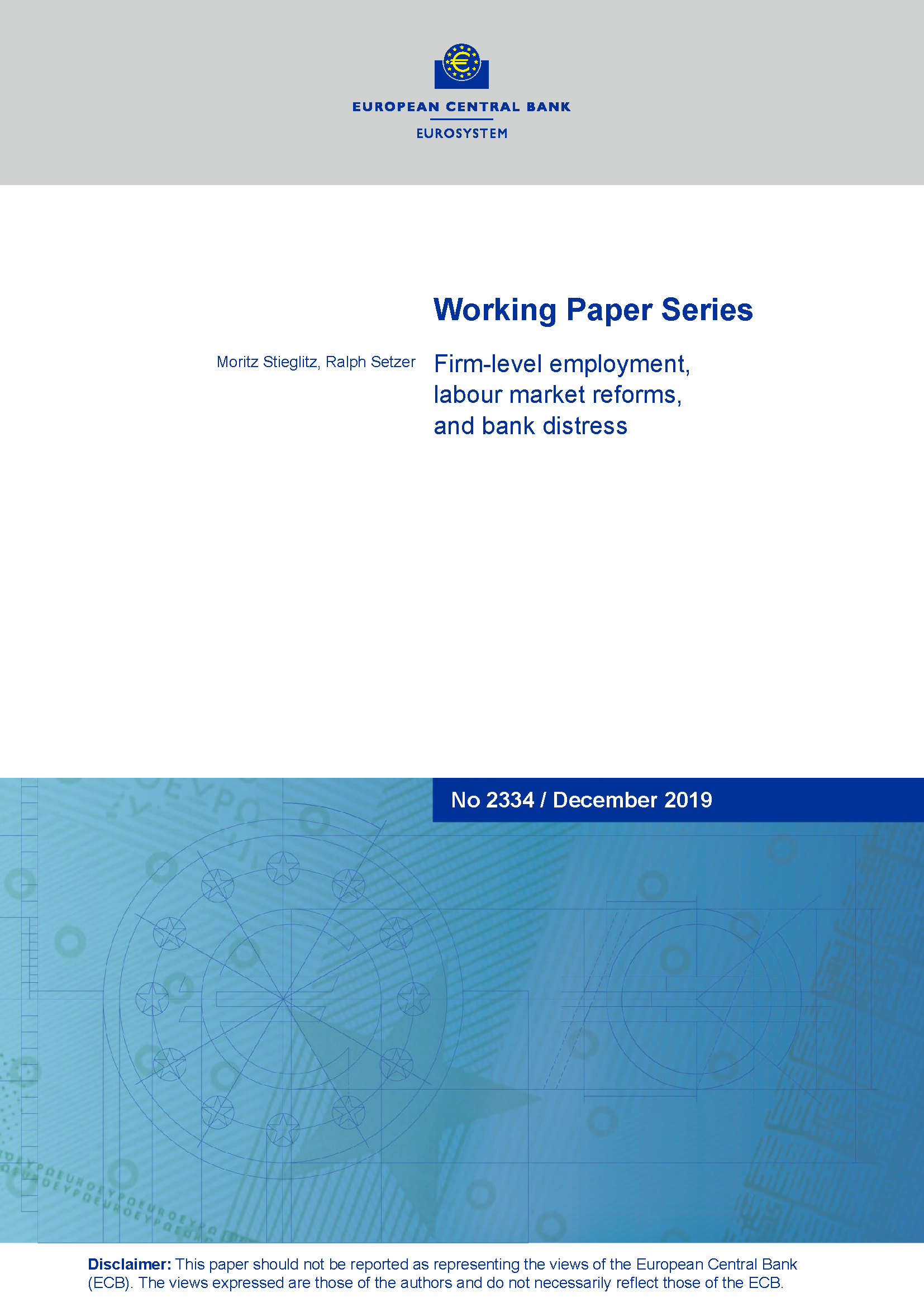
Climate Change-Related Regulatory Risks and Bank Lending
in: ECB Working Paper, No. 2670, 2022
Abstract
We identify the effect of climate change-related regulatory risks on credit real-location. Our evidence suggests that effects depend borrower's region. Following an increase in salience of regulatory risks, banks reallocate credit to US firms that could be negatively impacted by regulatory interventions. Conversely, in Europe, banks lend more to firms that could benefit from environmental regulation. The effect is moderated by banks' own loan portfolio composition. Banks with a portfolio tilted towards firms that could be negatively a affected by environmental policies increasingly support these firms. Overall, our results indicate that financial implications of regulation associated with climate change appear to be the main drivers of banks' behavior.
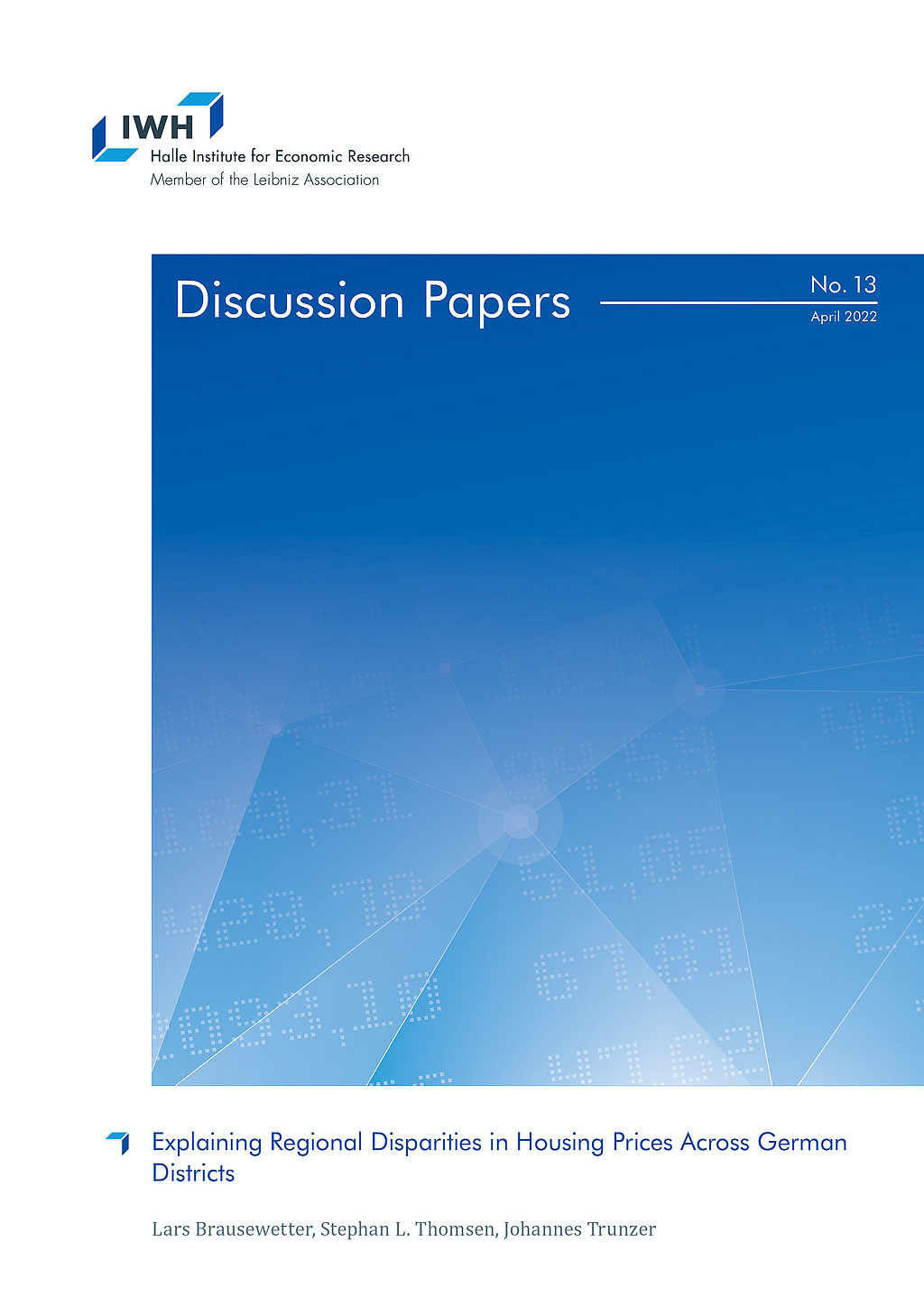
Explaining Regional Disparities in Housing Prices Across German Districts
in: IWH Discussion Papers, No. 13, 2022
Abstract
Over the last decade, German housing prices have increased unprecedentedly. Drawing on quality-adjusted housing price data at the district level, we document large and increasing regional disparities: Growth rates were higher in 1) the largest seven cities, 2) districts located in the south, and 3) districts with higher initial price levels. Indications of price bubbles are concentrated in the largest cities and in the purchasing market. Prices seem to be driven by the demand side: Increasing population density, higher shares of academically educated employees and increasing purchasing power explain our findings, while supply remained relatively constrained in the short term.
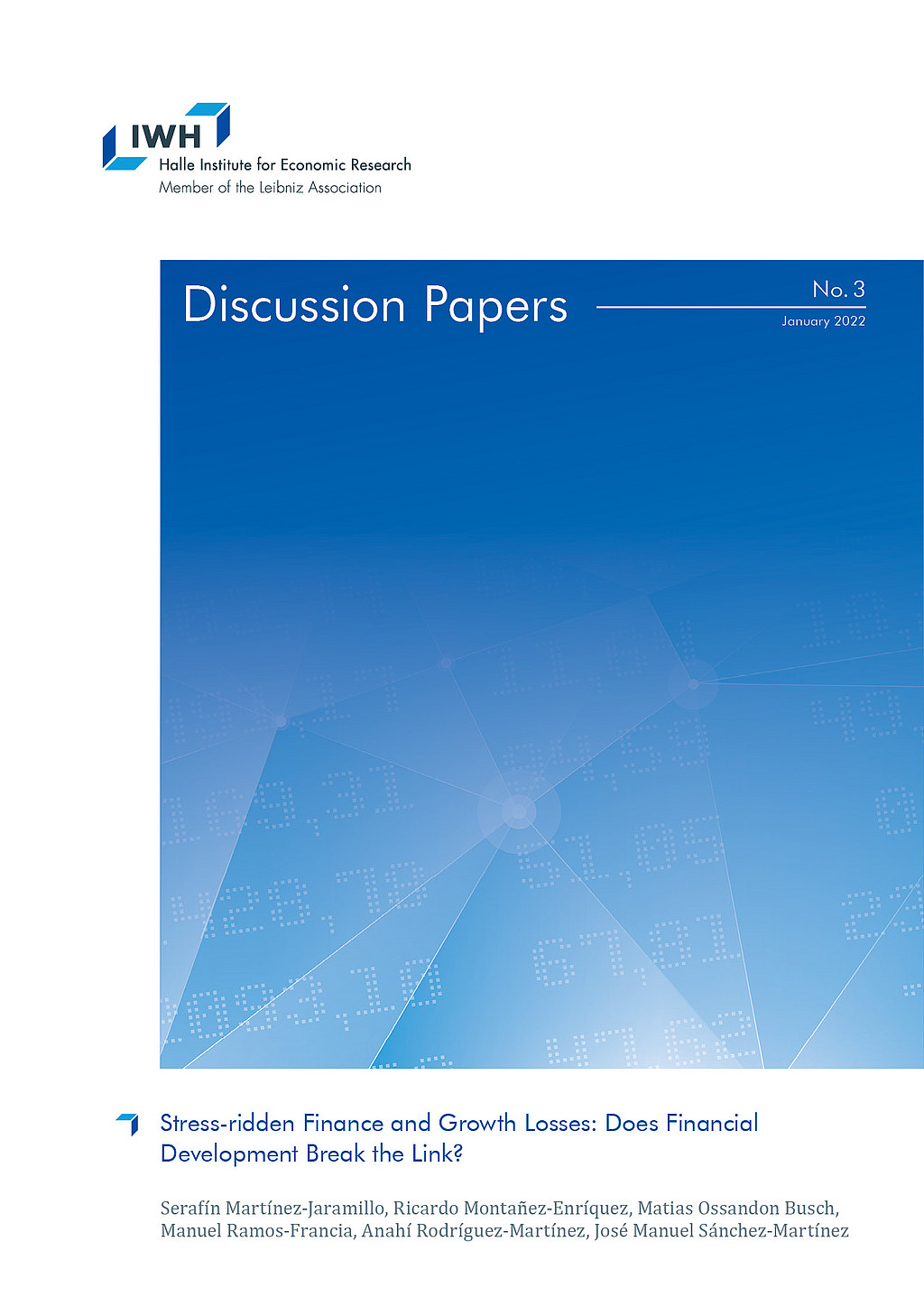
Stress-ridden Finance and Growth Losses: Does Financial Development Break the Link?
in: IWH Discussion Papers, No. 3, 2022
Abstract
Does financial development shield countries from the pass-through of financial shocks to real outcomes? We evaluate this question by characterising the probability density of expected GDP growth conditional on financial stability indicators in a panel of 28 countries. Our robust results unveil a non-linear nexus between financial stability and expected GDP growth, depending on countries’ degree of financial development. While both domestic and global financial factors affect expected growth, the effect of global factors is moderated by financial development. This result highlights a previously unexplored channel trough which financial development can break the link between financial (in)stability and GDP growth.
















